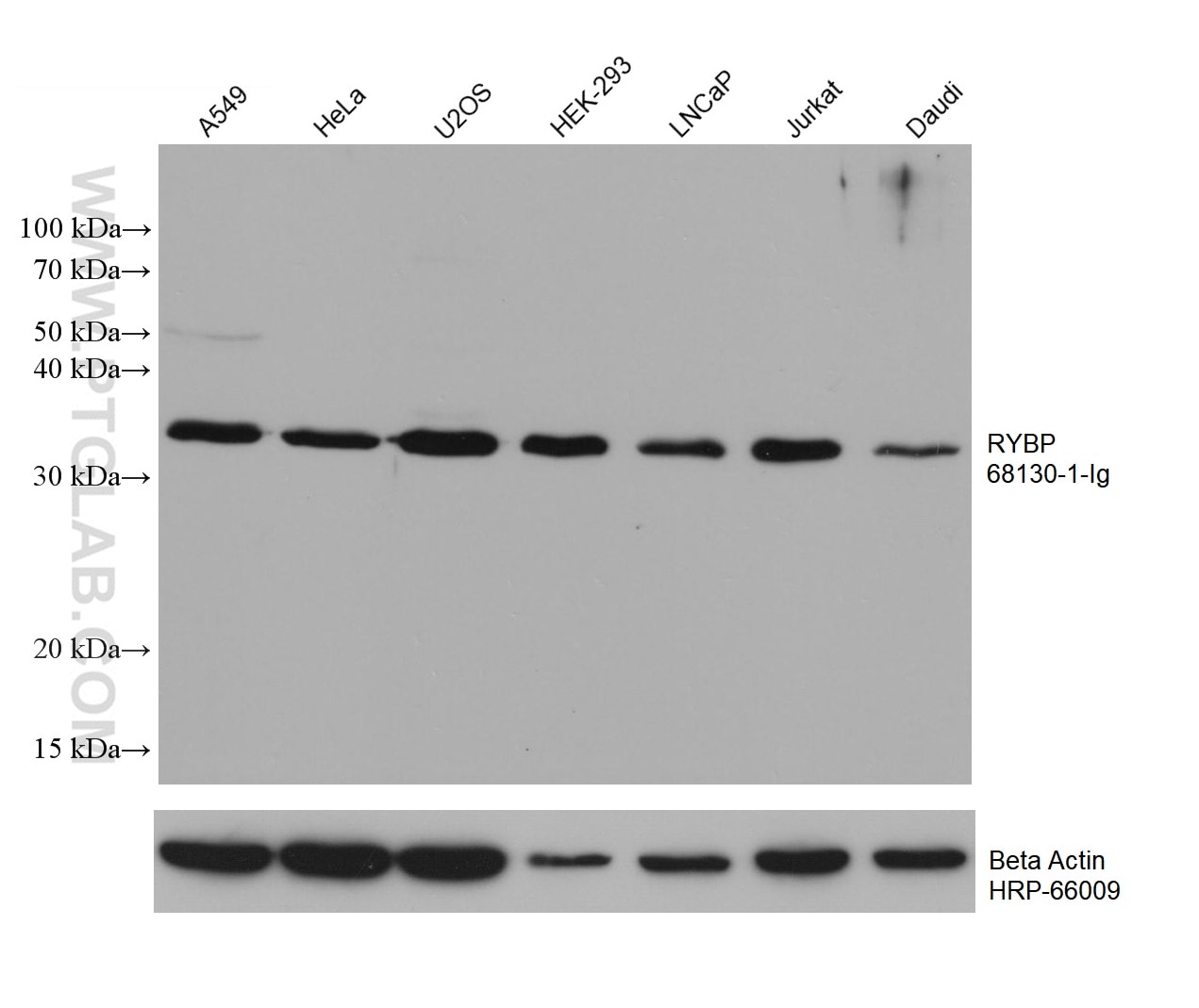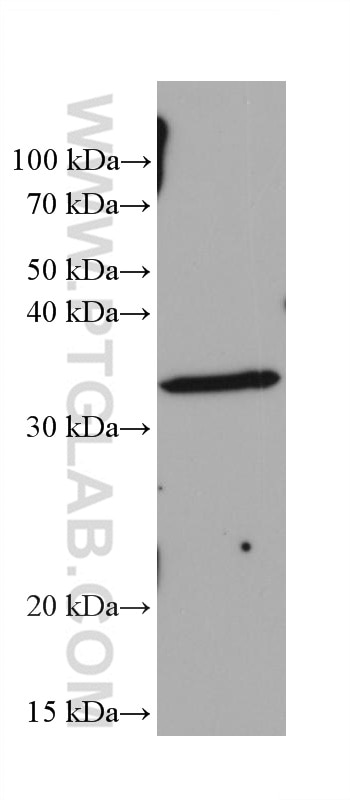Validation Data Gallery
Tested Applications
| Positive WB detected in | A549 cells, RAW 264.7 cells, HeLa cells, U2OS cells, HEK-293 cells, LNCaP cells, Jurkat cells, Daudi cells |
Recommended dilution
| Application | Dilution |
|---|---|
| Western Blot (WB) | WB : 1:5000-1:50000 |
| It is recommended that this reagent should be titrated in each testing system to obtain optimal results. | |
| Sample-dependent, Check data in validation data gallery. | |
Product Information
68130-1-Ig targets RYBP in WB, ELISA applications and shows reactivity with Human, mouse samples.
| Tested Reactivity | Human, mouse |
| Host / Isotype | Mouse / IgG1 |
| Class | Monoclonal |
| Type | Antibody |
| Immunogen | RYBP fusion protein Ag31715 相同性解析による交差性が予測される生物種 |
| Full Name | RING1 and YY1 binding protein |
| Calculated molecular weight | 228 aa, 25 kDa |
| Observed molecular weight | 32 kDa |
| GenBank accession number | BC014959 |
| Gene Symbol | RYBP |
| Gene ID (NCBI) | 23429 |
| RRID | AB_2923657 |
| Conjugate | Unconjugated |
| Form | Liquid |
| Purification Method | Protein G purification |
| UNIPROT ID | Q8N488 |
| Storage Buffer | PBS with 0.02% sodium azide and 50% glycerol , pH 7.3 |
| Storage Conditions | Store at -20°C. Stable for one year after shipment. Aliquoting is unnecessary for -20oC storage. |
Background Information
Polycomb repressive complexes (PRCs) are important chromatin regulators of embryonic stem (ES) cell function [PMID:22269950]. RYBP binds Polycomb H2A monoubiquitin ligases Ring1A and Ring1B and has been suggested to assist PRC localization to their targets. RYBP, firstly identified as a direct interactor with Ring1A, acts as transcriptional repressor in reporter assays, both in tissue culture cells and in the fly [PMID:16125914]
Protocols
| Product Specific Protocols | |
|---|---|
| WB protocol for RYBP antibody 68130-1-Ig | Download protocol |
| Standard Protocols | |
|---|---|
| Click here to view our Standard Protocols |

